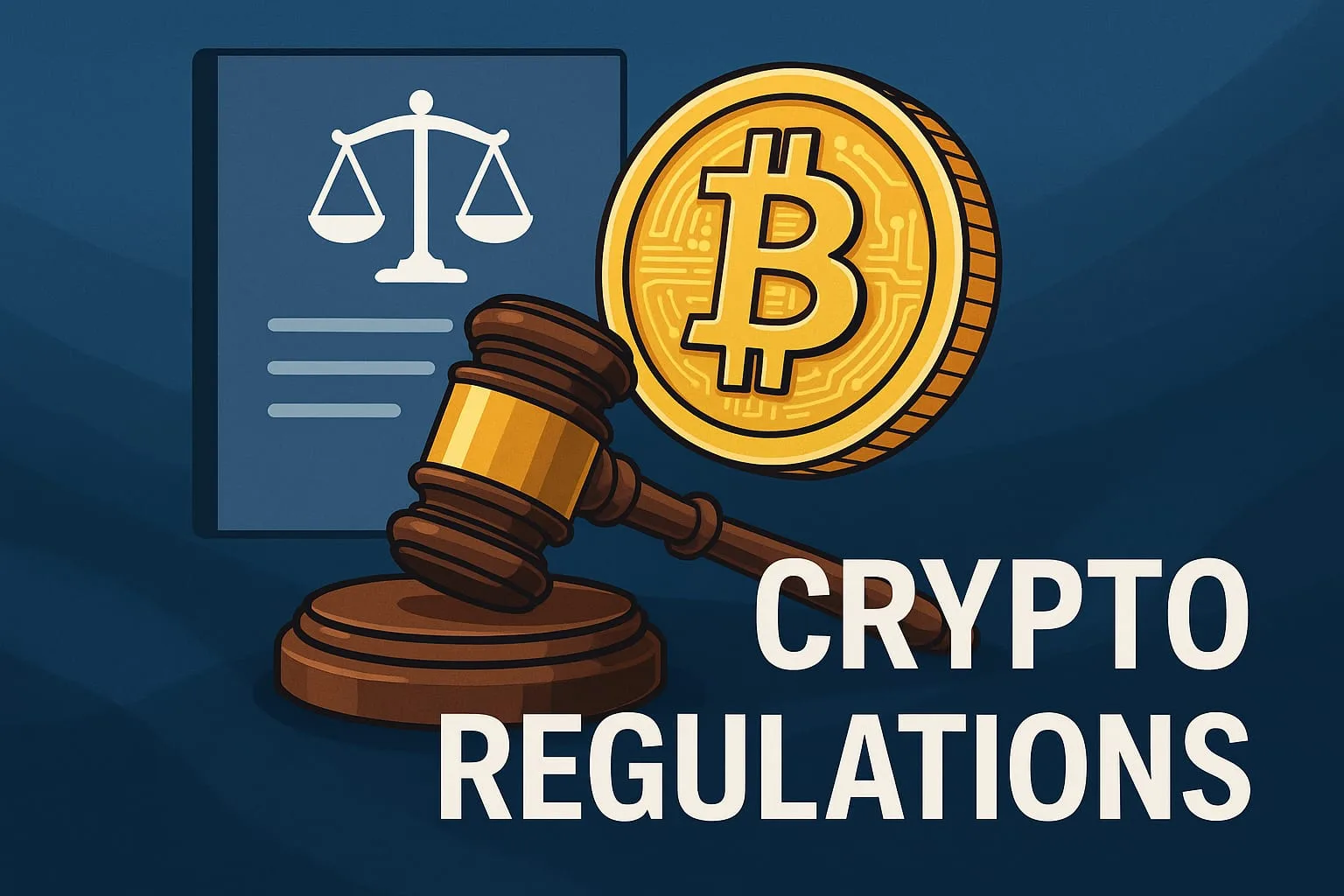The Evolving Landscape of Cryptocurrency Regulations: Navigating the Path to Global Adoption

In the past decade, cryptocurrencies have shifted from niche digital assets traded among early adopters to a globally recognized financial phenomenon. Bitcoin, Ethereum, and thousands of altcoins have captured the attention of retail investors, institutional players, and governments alike. However, as the market matures, the need for robust regulatory frameworks has become more urgent. Without clear rules, both innovation and investor protection are at risk.
This article explores how global regulatory landscapes are evolving, the challenges policymakers face, and the potential future of cryptocurrency laws — from taxation and anti-money laundering compliance to international cooperation.
Why Regulation Matters in the Crypto World
Cryptocurrencies operate on decentralized networks, free from the direct control of any single entity. This decentralization has empowered individuals, encouraged innovation, and provided financial inclusion in regions underserved by traditional banking.
However, it also presents significant challenges:
- Consumer Protection – Preventing scams, fraud, and market manipulation.
- Market Stability – Minimizing volatility caused by unregulated activities.
- Financial Crime Prevention – Combating illicit uses such as money laundering or terrorist financing.
- Tax Compliance – Ensuring fair and transparent tax collection on crypto gains.
Clear regulation not only helps mitigate these risks but also builds trust among traditional financial institutions, paving the way for wider adoption.
Different Approaches Across the Globe
No two countries have taken the same path when it comes to regulating cryptocurrencies. The diversity of approaches reflects differing economic priorities, legal systems, and cultural attitudes toward innovation.
United States
The U.S. has a patchwork of regulations across federal and state levels. While the Securities and Exchange Commission (SEC) often views many tokens as securities, the Commodity Futures Trading Commission (CFTC) treats them as commodities. This overlapping jurisdiction creates confusion for businesses and investors, leading to calls for a unified federal framework.
European Union
The EU recently introduced the Markets in Crypto-Assets (MiCA) regulation, aimed at harmonizing rules across member states. MiCA covers stablecoin issuance, licensing requirements for service providers, and stringent consumer protection standards — potentially setting a global benchmark for crypto oversight.
Asia-Pacific
Countries like Japan and Singapore have embraced progressive, clear regulations, fostering innovation while maintaining strong compliance standards. In contrast, China has taken a restrictive approach, banning most crypto-related activities while developing its own central bank digital currency (CBDC).
Middle East and Africa
The UAE, particularly Dubai, is positioning itself as a global crypto hub through the Virtual Assets Regulatory Authority (VARA). Meanwhile, African nations are exploring crypto as a solution to financial exclusion, but formal regulation remains at an early stage.
Challenges for Regulators
While regulation is essential, it is far from straightforward. Policymakers must balance innovation with investor protection, address cross-border transactions, and adapt to new technologies such as decentralized finance (DeFi) and non-fungible tokens (NFTs).
- Technological Complexity – Blockchain technology evolves rapidly, often outpacing the legislative process.
- Jurisdictional Conflicts – Crypto transactions transcend borders, making enforcement challenging.
- Definitional Ambiguity – Is a token a currency, a commodity, or a security? Different interpretations affect how laws are applied.
- Innovation Risk – Overly restrictive rules can stifle innovation and drive businesses offshore.
The Role of International Cooperation
Given crypto’s borderless nature, international cooperation is vital. Organizations like the Financial Action Task Force (FATF) are developing global anti-money laundering standards for virtual assets. Collaborative agreements between countries could lead to more consistent frameworks, reducing the regulatory “arbitrage” that companies exploit by relocating to more lenient jurisdictions.
Trends Shaping the Future of Crypto Regulations
- Licensing for Exchanges and Custodians – Requiring service providers to meet compliance, security, and capital adequacy standards.
- Stablecoin Oversight – Ensuring reserve transparency and pegging stability.
- Taxation Clarity – Introducing clear rules for capital gains, staking rewards, and NFT profits.
- CBDC Integration – Exploring how central bank digital currencies coexist with decentralized assets.
- DeFi Governance – Establishing frameworks for decentralized protocols without undermining their core principles.
Opportunities for the Crypto Industry
Far from being purely restrictive, regulation can unlock new opportunities:
- Institutional Adoption – Clear rules give large financial institutions confidence to enter the market.
- Mainstream Integration – Legal certainty facilitates integration into payment systems, lending, and remittances.
- Market Maturity – Regulatory oversight can reduce volatility and improve long-term stability.
Final Thoughts
The future of cryptocurrency depends heavily on the regulatory path chosen by global leaders. While some fear that regulation could suppress innovation, the reality is that a well-balanced framework can protect investors, deter criminal activity, and foster sustainable growth.
As governments refine their approaches, collaboration between regulators, industry leaders, and the crypto community will be crucial. By striking the right balance, regulation can become a catalyst for mainstream adoption rather than an obstacle.
For in-depth coverage of the latest crypto trends and regulations, visit CryptoWatchNews.
You can also explore our dedicated section on cryptocurrency regulations for up-to-date insights on evolving laws around the world.
